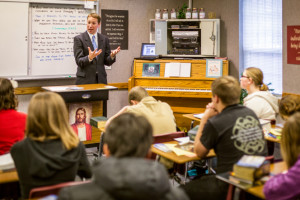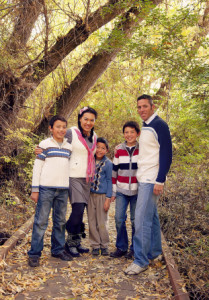 Over the last several years, the LDS Church history department has become increasingly open about the Church’s history. This can be seen in the work made available by the Joseph Smith Paper’s Project and in the recent release of several milestone Gospel Topics essays, especially those on the practice of polygamy by members of the LDS Church during the nineteenth century.
Over the last several years, the LDS Church history department has become increasingly open about the Church’s history. This can be seen in the work made available by the Joseph Smith Paper’s Project and in the recent release of several milestone Gospel Topics essays, especially those on the practice of polygamy by members of the LDS Church during the nineteenth century.
In an unanticipated and exciting step in the right direction, the LDS Church has now decided to teach this information in seminary classes. Parents can view the lessons on D&C 132 and the discussion of Joseph Smith’s practice of polygamy on the lds.org website under seminary lessons here and  here.
here.
I urge parents to not only read the lessons but also discuss them together as a family. These lessons are carefully written to emphasize those aspects of the section dedicated to eternal marriage and can serve as a basic introduction to the early practice of polygamy in Nauvoo.
From these lessons, students will be taught about eternal marriage, the zenith doctrine of the Restoration. Then they will be taught that God commanded Joseph Smith to establish polygamy as part of the restitution of all things, he married many women, and it was a trial for both Joseph and Emma Smith. It was also a trial for other early polygamists who were reluctant to participate. Fortunately, this was a temporary commandment that was removed in 1890. These are not easy topics to discuss or understand, but avoiding them will not make them go away.
An Op Ed piece written by Kristy Money, a member of the Ordain Woman board, was published in the Salt Lake Tribune on Sunday, March 29, encouraging the boycott of these lessons by seminary teachers and parents. This seems like a step backwards if we want to be open about our past. In urging nonparticipation, she listed several concerns. Interestingly, what I read in the lessons was quite different from the references in Ms. Money’s essay.
Students will not be taught God commanded Joseph to marry teenagers, which is good because there is no evidence that he was ever commanded to marry teenaged brides, even though he did.
Students will not be taught that Joseph married women without Emma’s knowledge. Parents may,  however, want to discuss this with their children, as the LDS Gospel Topics essay on Nauvoo polygamy covers this concern.
however, want to discuss this with their children, as the LDS Gospel Topics essay on Nauvoo polygamy covers this concern.
The lesson does not teach that “if a man simply ‘desires a virgin,’ he has a God-given right to take her as a plural wife,” despite the opinion of his first wife. This is a simplified contortion of complicated doctrine, and it is best that students learn it as worded in the revelation instead of how it is interpreted from critics or spun on the Internet.
The lesson does not teach the only reason polygamy was practiced was to raise righteous seed. It is listed as one of the reasons “as part of the restitution of all things.” The Gospel Topics essays also mention it being a customized trial for the Saints of that time. Parents may want to discuss these other reasons with their children.
Ms. Money contends that “sexual predators have been using these rationalizations to seduce girls long before the church recently published them.” If this is the case, then, as parents, we need to do all we can to make sure our teenagers are properly informed of what the historical record shows regarding Joseph’s institution of polygamy and its limited practice, so they will not fall prey to such reprehensible acts out of ignorance. D&C 132 explicitly condemns sexual relations outside of the bounds of marriage.
regarding Joseph’s institution of polygamy and its limited practice, so they will not fall prey to such reprehensible acts out of ignorance. D&C 132 explicitly condemns sexual relations outside of the bounds of marriage.
The LDS Church is to be commended for their continual efforts to increase dialogue regarding challenging topics. As members, let’s own our genuine past and study our canonized scripture. Protecting our children includes teaching them truth, so when they encounter misinformation they can recognize it as error. As parents and their children discuss these deep doctrines and difficult aspects of history, they can move toward a better understanding of Joseph Smith’s practice of polygamy.
Laura Harris Hales is the mother of a seminary student and the co-author of Joseph Smith’s Polygamy: Toward a Better Understanding (Kofford Books, 2015).

